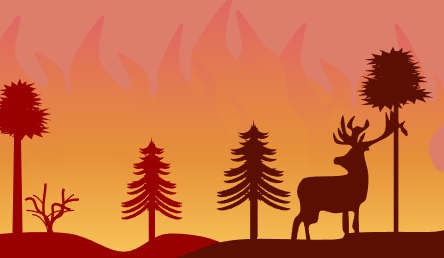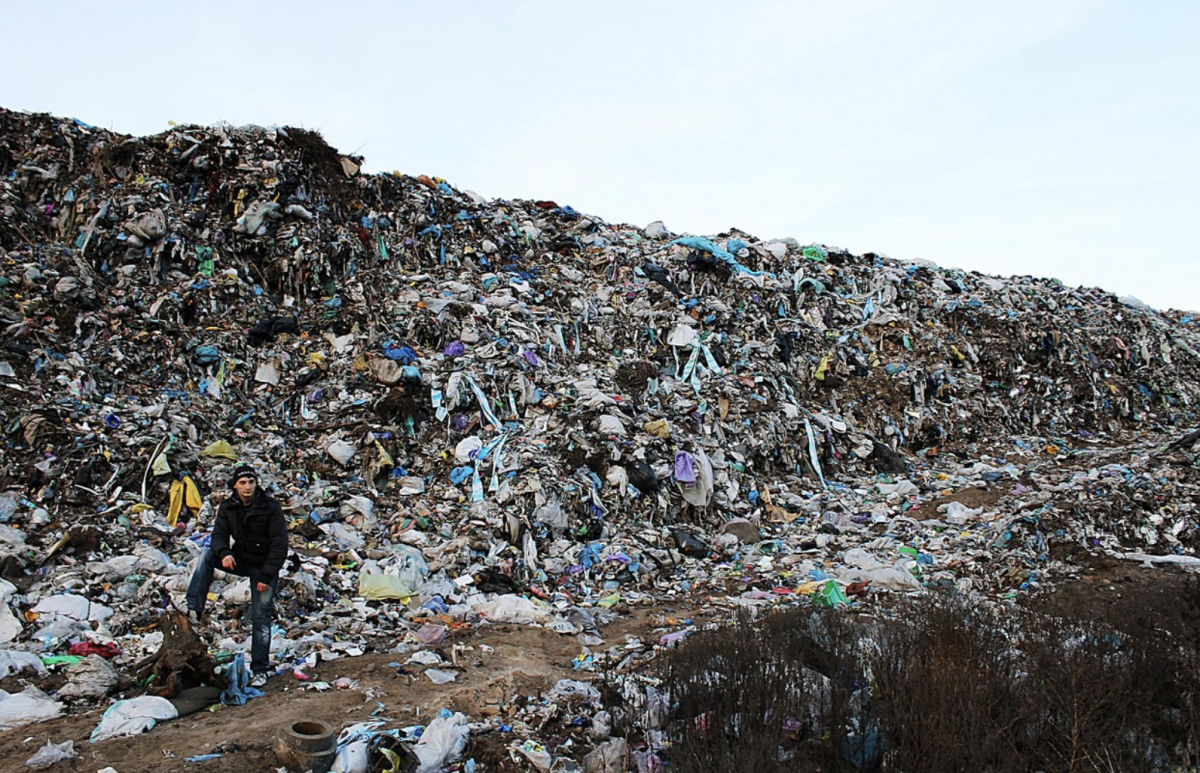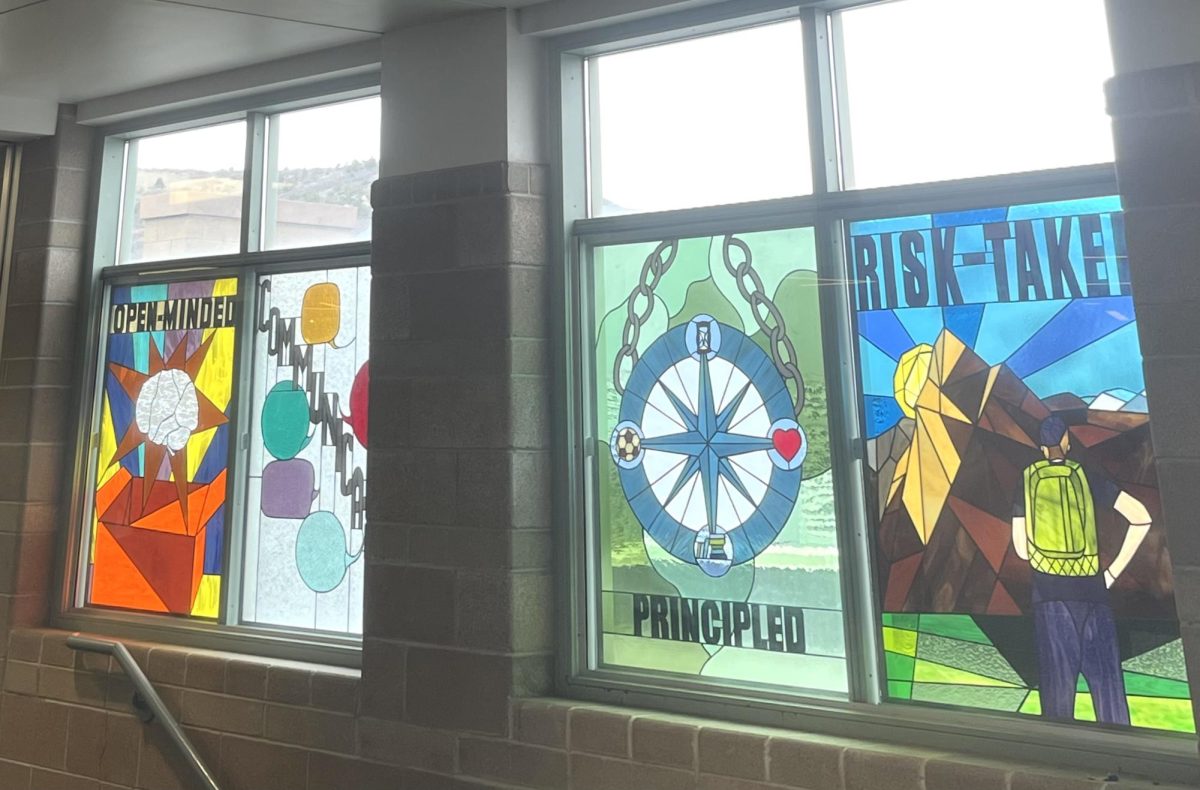
Wildfire season is quickly approaching for residents in Colorado. According to wfca.com, Colorado has on average 5,618 wildfires and approximately 237,500 acres of land burned every year.
On August 13, 2020, Colorado had its largest wildfire to date, the Cameron Peak wildfire. According to the US Forest Service, the monstrous fire spanned 208,913 acres over the course of nearly 112 days. The Cameron Peak fire cost over a staggering $132 million to fight and contain, with market property loss estimated at $6.3 million, and total structure loss estimated near $100 million. The fire devoured a large portion of the Rocky Mountain National Park, Arapaho and Roosevelt National Forests. The cause of the fire is unknown, but investigators strongly believe that it was caused by humans.
“Now that is considered a more average size with fires across the US crossing into the 100,000-acre range and more,” West Metro firefighter Tyler Sugaski said. “What we have experienced in Colorado in the last 10 years is happening all over the US: larger, much more destructive fires that are much more difficult to contain.”
Firefighters are pushing back against wildfires not only in Colorado but across the world. According to epa.gov, there are an average of 70,000 wildfires every single year.
Another example of a devastating forest fire was the Australia Bushfire which took place in June, 2019. According to the University Corporation for Atmospheric Research, the enormous fire spanned 46 million acres and lasted nine months, making it the second-largest wildfire in history. The fires were primarily caused by arson due to people deliberately tossing cigarette butts in bushes. The cost of the fires was as much as $110 billion, more than 3,000 homes were destroyed, 33 people died, thousands of people were hospitalized, and nearly 3 billion animals were killed, injured, or displaced by this horrible fire.
To make matters worse, these devastating fires are often caused by the arrogance, carelessness, and malice of humans.
“Forest fires start for many different reasons,” West Metro fire department captain and wildland coordinator Brendan Finnegan said. “Unfortunately, many fires start due to human causes.”

Whether it’s from carelessly tossing a cigarette butt, recklessly leaving a campfire unattended, or arson, many dreadful fires that could have been easily prevented can be linked back to humans.
According to Finnegan, one common cause of fires includes people burning too much wood in a campfire on windy days, causing sparks to travel to trees and grass from a longer distance. Charcoal barbeque grills are also a common cause. More commonly, fires can also be caused by improperly disposed smoking materials, vehicle mechanical issues, and flat tires that cause sparks when the rim of the wheel hits the pavement.
The culprit doesn’t end with the one who sparks the flame, everyone is to blame as the carbon emissions from vehicles that are constantly pumped into the air fuel what were once small, manageable blazes into conflagrations stretching as far as 3,000,000 acres, destroying everything in its path.
“Other things that we can do to prevent forest fires from becoming mega-fires is to do lots of fuel reduction and mitigation around communities and in heavily forested areas that need to be cleaned up,” Finnegan said.
These destructive human-caused fires must end before the fires grow to even more unmanageable sizes and further destroy forests. However, they can easily be stopped and prevented.
“Forest fire prevention starts with being aware of human impact on our wildland areas,” Sugaski said.

Fires can destroy vegetation, hurt the landscape where animals inhabit, pollute water supplies, and make way for flooding, erosion, and landslides on mountains once the trees are gone.
With the endlessly increasing number of fires across the world and the increasing scale of the fires, the need for firefighters is also increasing. Some major fires can require thousands upon thousands of firefighters at times.
“The extreme sizes that wildfires can grow nowadays take a lot of people to contain. A fire of 100,000 acres can involve almost 10,000 firefighters and support staff,” Sugaski said. “It is difficult to support multiple fires of that size burning at the same time, and comes at a huge financial and human stress cost.”
Teaching others about the countless ways that forest fires start and bringing awareness to the issue is the best way to prevent them. Some ways to prevent wildfires include following fire warnings and regulations, properly disposing of smoking materials, being more cautious of outdoor fires, practicing safer use of machinery, and reporting any hazardous signs of fire or smoke to the fire department.
“In addition to awareness and adherence to environmental conditions and regulations, people can reduce the spread of dangerous wildfires by adhering to best practices in home mitigation,” Sugaski said.
Everyone is capable of doing small things to stop the issue such as notifying the fire department of any signs of a fire or smoke that they see before the fire gets out of hand or following fire safety warnings and procedures.
“The number of wildfires is increasing, but this is due to more human-caused starts as humans expand into more wild areas,” Sugaski said. “What is more concerning than the small increase in the number of fires is the size and destruction of fires that do start.”
Everyone can do their part and take action to prevent forest fires. This growing problem can only end once everyone realizes their part in the issue and takes action to ensure they do not start the fires.
For more information on wildfires or to report a fire, call (303)989-4307 to reach the West Metro Fire Rescue administrative offices or fill out the contact form on the West Metro Fire Protection District website.







